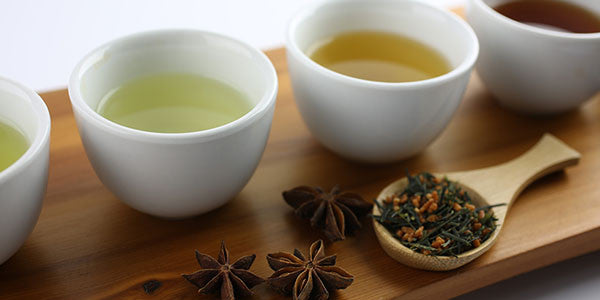Lizzy's Corner — black tea

Top 5 Teas of 2024
Posted by Amy R at
A frequently asked question at the Kirkland tea shop is: what are your most popular teas? We crunched the numbers and here's the answer for 2025. First a little background, black teas have dominated the top 5 since we opened the shop in 2016. However, a couple of years ago, two green teas started to climb into the top 10 and then top 5 best sellers. Earl Grey Cream: premium black tea is blended with high quality bergamot oil and French vanilla. The result is a naturally sweet Earl Grey tea. This is the first year Earl Grey Cream overtook...
Tea + Holidays
Posted by Amy R at
Tea plus the holiday season make a great combination! Here are some ideas to incorporate tea into your holiday meals and entertaining: Flavored black teas like the popular Marzipan and Earl Grey Cream make a great base for tea lattes to serve with a holiday breakfast or brunch. Black teas and oolongs pair well with appetizers, rich cheeses and meat dishes. Green teas go well with salads and lighter dishes and meals. Fruity blends and herbal blends make great dessert teas and are also a nice option for kids and others who are looking for a non-alcoholic drink with flavor. We...
- Tags: black tea, chai tea, green tea, herbal tea, tea latte, tea recommendation
Breakfast Tea Blends
Posted by Amy R at
A common questions in the shop is: do we have a traditional English Breakfast tea? As with most tea subjects, the answer is not a simple "yes" or "no." Here's what we learned while researching the interesting history of breakfast tea blends. In the 1700s all black tea in Britain was imported from China. Tea was expensive and only the upper class could afford it. Over time, the price came down and people switched from ale to tea with their breakfast. Breakfast teas were simple black teas for middle-class consumers to begin their day. Originally these breakfast teas consisted of Chinese...
Intro to Black Tea
Posted by Amy R at
This month we’re showcasing black tea. Like other true teas, black teas are made from leaves of the camellia sinensis plant. The difference between black teas and other types of teas is that the leaves have been withered, rolled, oxidized and fired in an oven. During this process, the color of the leaves turns from green to brown and black, and various of flavors are created. The Chinese have produced green tea for thousands of years, while black tea is a relatively new tea. There is evidence that the Chinese first made black tea in the 1700s in the Wuyi...
- Tags: black tea
English Breakfast Tea Blends
Posted by Amy R at
One of the most popular questions in the shop is: do we have a traditional English Breakfast tea? As with most tea subjects, the answer is not a simple "yes" or "no." Here's what we learned while researching the interesting history of breakfast tea blends. In the nineteenth century, British tea companies such as Lipton and Twinings created blends of Chinese black teas for British tea drinkers, often using Keemun or Yunnan. English breakfast blends were made to be simple, early morning teas for middle-class consumers. In the mid- to late-nineteenth century British tea companies began to import tea from India...
What is Japanese Black Tea?
Posted by Will R at
This month’s tea club includes a tea we named Mt. Fuji Noir. It’s a Japanese black tea which is very unusual to find in Japan, much less in the US. Last year Amy discovered this tea on a tea tour of Japan that started in Tokyo and ended on the island of Kyushu. As you can imagine, the tour members taste tested many types of green tea including sencha, gyokuro, genmaicha, and matcha all day, every day. Partway through the tour, one of Japanese tea companies served a black tea to the group. Everyone tasted the tea, smiled and quickly...
- Tags: black tea, Japanese tea, tea club, tea tips
Comparing Teas
Posted by Amy R at
In a recent Specialty Tea Club package, we included the normal one ounce of each of the three teas. Plus we included a sample of Green Clouds and Mist Supreme which is a premium grade of Green Clouds and Mist (one of the three monthly teas). We recommended that tea club members make a cup of both types of green tea. To do this type of comparison with any two teas, try to use to same amount of tea and water temperature (for this tea, 170-180 degrees). As you’re making and tasting the tea, pay attention to: the dry leaf shape,...
